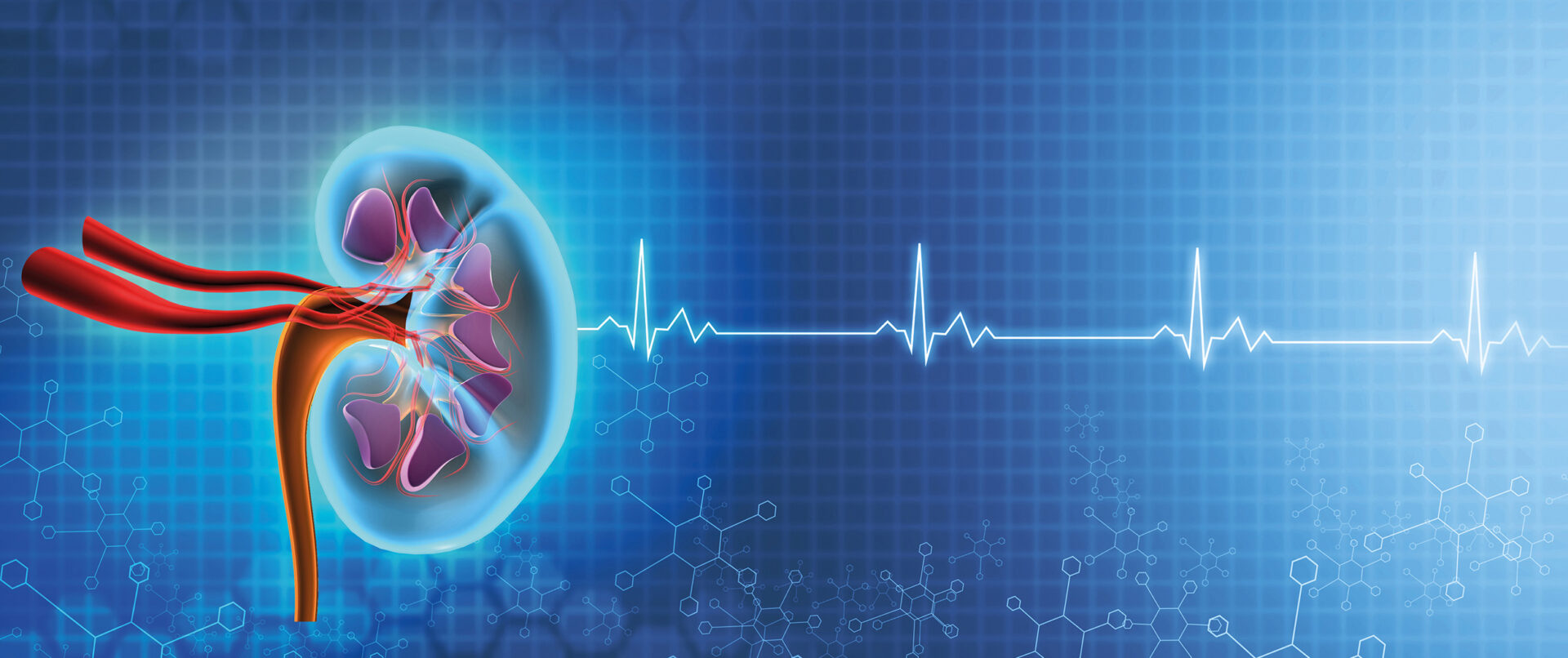The prevention of hypertension-associated secondary diseases is the focus of the new ESH (European Society of Hypertension ) hypertension guideline. Special emphasis is placed on secondary prevention with regard to chronic kidney disease (CKD). The guideline recommends that the glomerular filtration rate and – this is new – albuminuria should also be measured when hypertension is first diagnosed.
Arterial hypertension is a common and preventable cause of heart attack, stroke, kidney failure and death. Risk factors for high blood pressure include obesity, poor diet, lack of exercise and stress [1]. “When you consider that hypertension is the most common cause of chronic kidney disease after diabetes mellitus and that around a third of all dialysis cases are due to high blood pressure, the potential of secondary prevention through early detection and timely treatment of hypertension becomes clear,” explained Prof. Markus van der Giet, MD, Chairman of the German Hypertension League [2]. “It is good that the guideline has now firmly integrated the assessment of renal parameters into the patient work-up of people with hypertension,” says the expert [2].
| CKD is present with an eGFR <60 ml/min/1.73m2 and/or albuminuria >30 mg/d. In the case of manifest CKD, the new ESH guidelines recommend aiming to reduce blood pressure to below 130/80 mmHg if albuminuria is present. In CKD patients without albuminuria, blood pressure should be lowered to the 130/70-139/79 mmHg range. |
eGFR and increased albuminuria as independent risk factors
“The new guidelines are a milestone in terms of secondary prevention and will help to ensure that fewer people develop severe kidney disease as a result of their hypertension and require renal replacement therapy,” concluded Prof. van der Giet [2]. The new guidelines recommend the assessment of renal function (eGFR according to the EPI-CKD formula), a kidney ultrasound and the determination of albumin loss via the kidney in spontaneous morning urine when hypertension is first diagnosed [3]. Prof. Dr. med. Julia Weinmann-Menke, spokesperson for the German Society of Nephrology (DGfN), is particularly pleased with the recommendation on urine testing: “The guideline emphasizes that the eGFR and the albumin-creatinine ratio are two independent risk factors. Previously, the albumin-creatinine ratio in urine was only measured if the eGFR was already reduced and the kidneys were already damaged. However, increased albuminuria indicates kidney damage at an early stage and independently of the eGFR and is therefore a genuine early detection marker. The DGfN has been campaigning for years to integrate this marker into the general check-up examinations – so far in vain. We see the current guideline as finally heralding a paradigm shift” [2].
| Which screening intervals to choose? |
| For hypertensive patients who have no hypertension-associated organ damage at initial diagnosis, the guidelines recommend that the eGFR and albumin-creatinine ratio be measured every three years. |
| Patients with pre-existing kidney damage should be screened more frequently, for example annually. This is the only way to ensure that the window of opportunity for the use of modern drugs such as SGLT-2 inhibitors, which can effectively halt the loss of kidney function, is not missed. This is because these drugs may only be prescribed initially if the eGFR is not yet below 25 ml/min/1.73m2. |
| to [2,3] |
What is the criterion for a referral to a specialist?
Both Prof. Weinmann-Menke and Prof. van der Giet emphasize that the treatment of incipient hypertension-associated chronic kidney disease can be carried out in the family doctor’s practice [2]. “Lowering blood pressure with medication alone is often enough to stop the progression of kidney damage”. According to both, a referral to a nephrologist is only recommended if the kidney function falls below 60 ml/min/1.73 m2 there is blood in the urine that cannot be explained by a urological disease, there are significant amounts of protein in the urine, the blood pressure cannot be controlled even with three medications, the kidney function is rapidly declining or there is a well-founded suspicion of a specific kidney disease (e.g. polycystic kidney disease).
Literature:
- «European Society of Hypertension announces comprehensive new Guidelines for the Management of Arterial Hypertension», European Society of Hypertension, 28.06.2023.
- «Neue ESH-Leitlinie: Bei Hochdruckpatientinnen und -patienten muss regelmässig die Albumin-Kreatinin-Ratio erhoben werden», Deutsche Hochdruckliga, 27.06.2023.
- Mancia G, et al.: Authors/Task Force Members:. 2023 ESH Guidelines for the management of arterial hypertension The Task Force for the management of arterial hypertension of the European Society of Hypertension Endorsed by the International Society of Hypertension (ISH) and the European Renal Association (ERA). J Hypertens. 2023 Jun 21. doi: 10.1097/HJH.0000000000003480. Epub ahead of print. PMID: 37345492.
HAUSARZT PRAXIS 2023; 18(11): 21











